Our House of Alladin
Pranav Rathod
November 26, 2022
A Virtual Reality Project made using Unity and Virtual Reality Toolkit(VRTK), to give an immersive experice to interact an explore an Aladdin Themed Land inside the UIC's Future CS Building's Atrium

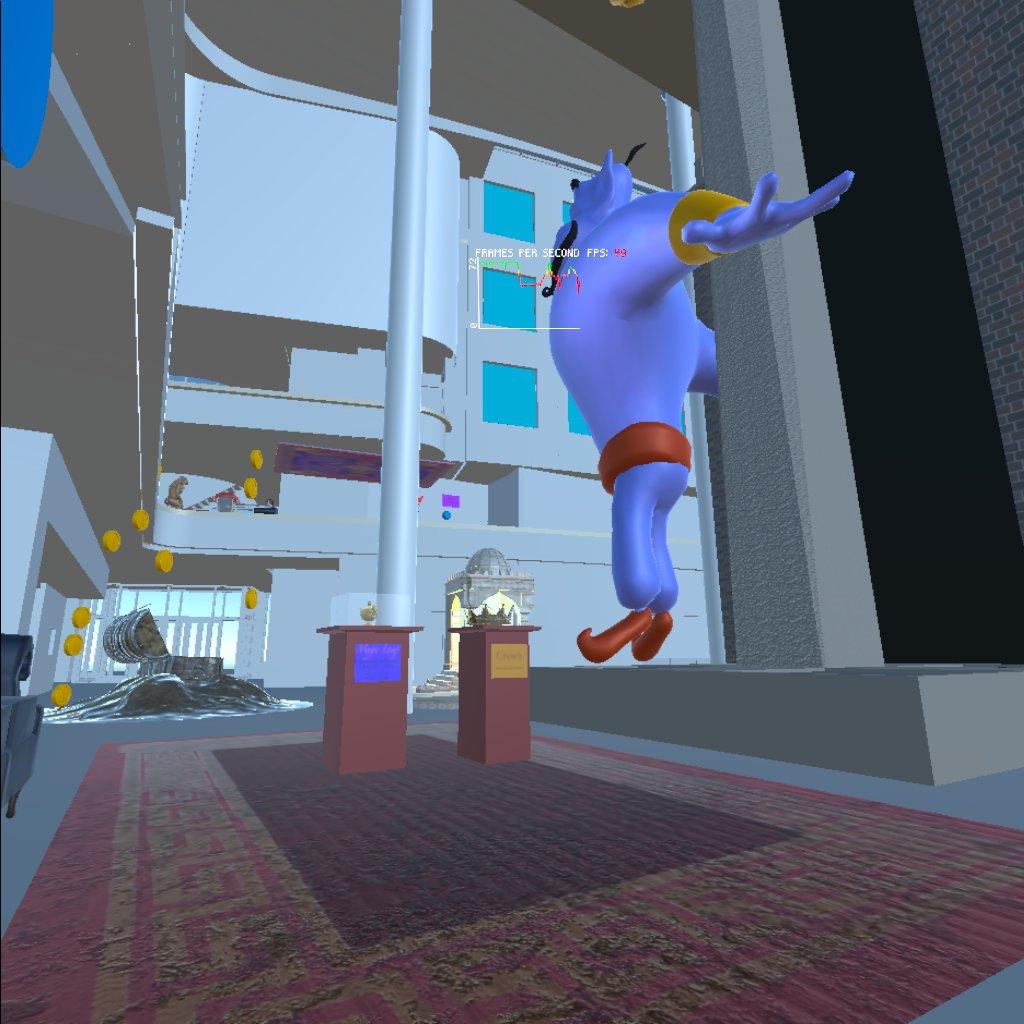

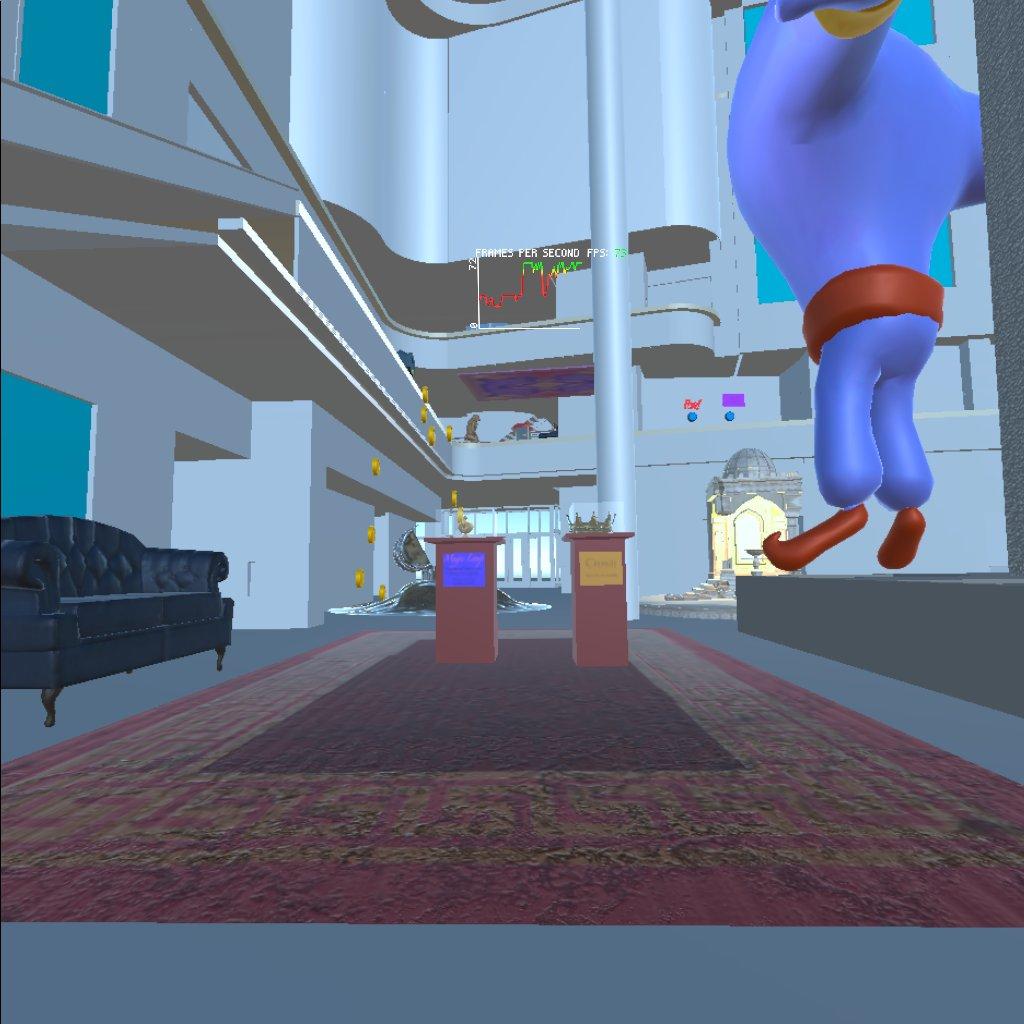
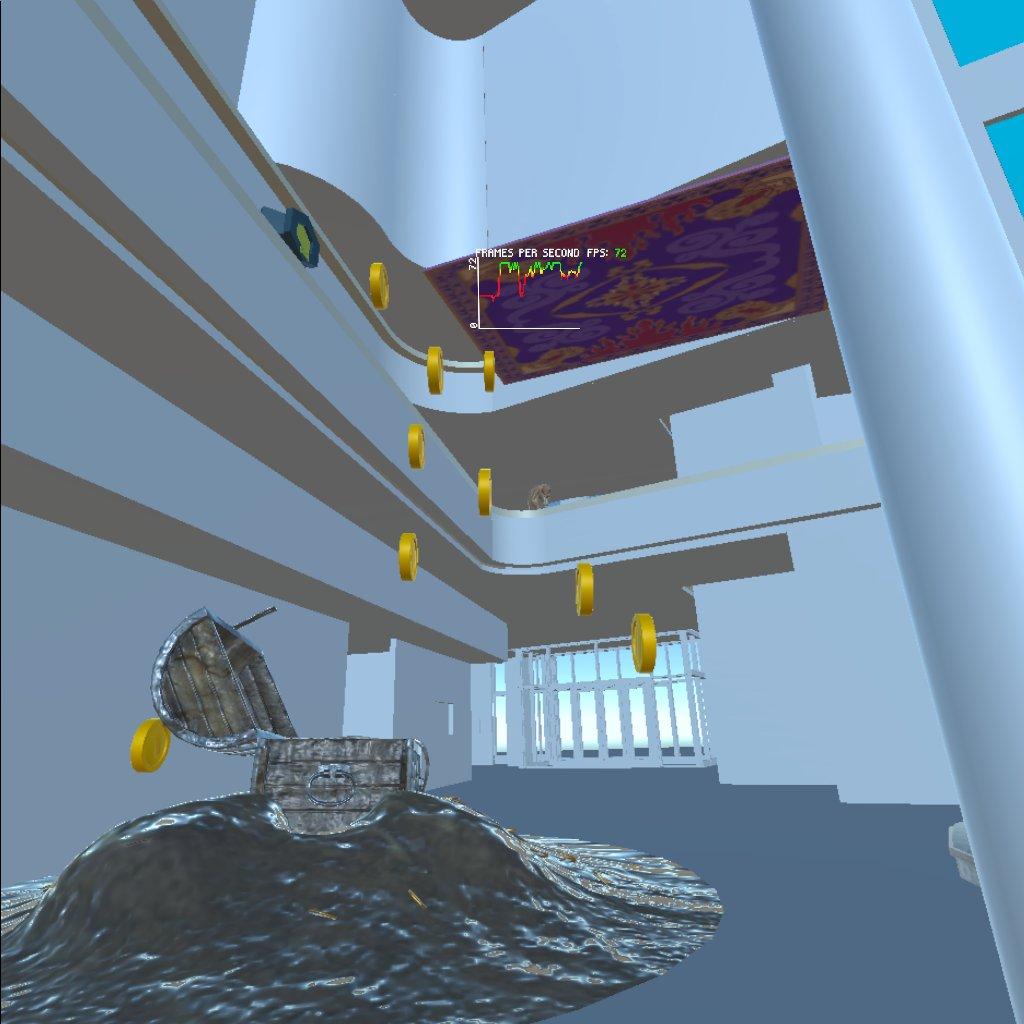


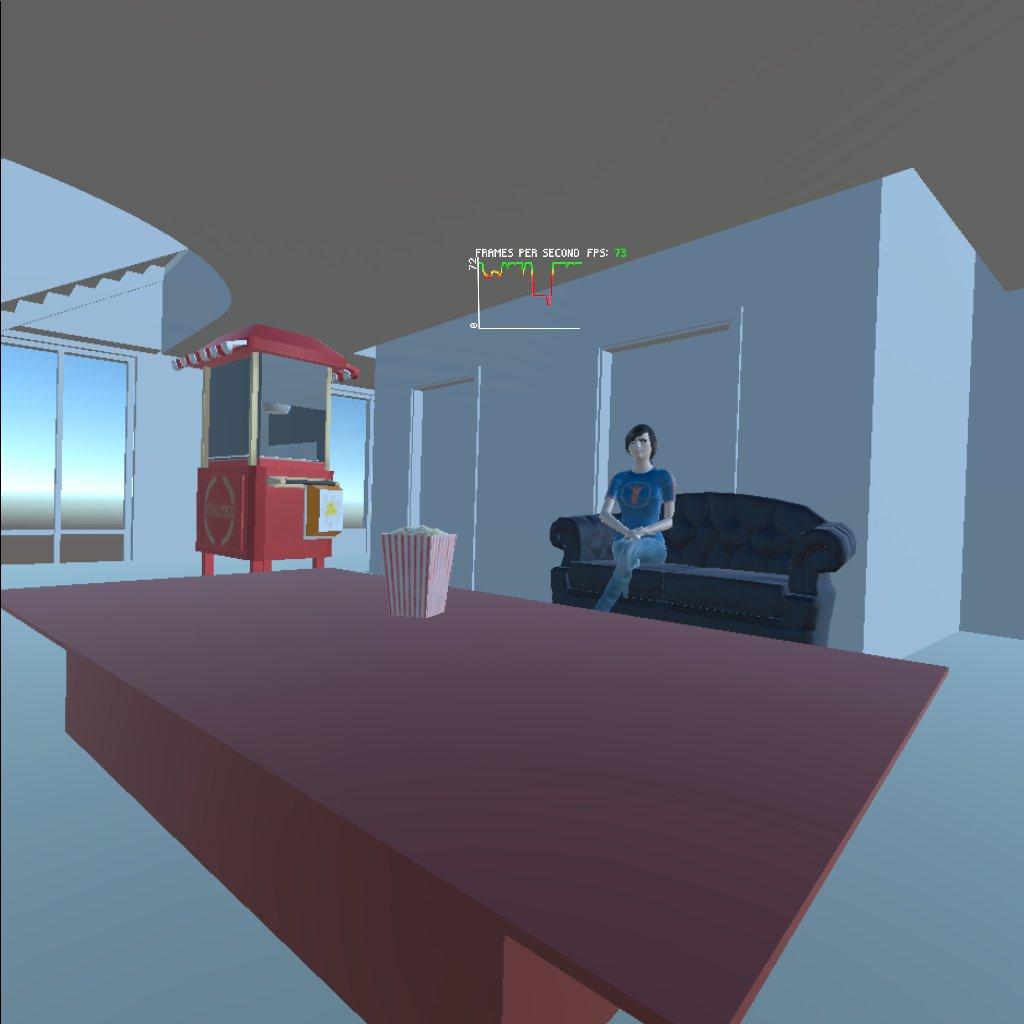
How you would use this kind of technology to introduce someone (say your parents, or a politician) to a new building before it was finished.
I vividly remember the mornings when I would eagerly pick up the newspaper and come across front-page advertisements showcasing new property launches and enticing deals. The mock renderings of these buildings, parks, and clubhouses presented a fantastical vision of what was to come, allowing me to imagine a future life within those spaces. Everything appeared so futuristic and awe-inspiring in those images. Years later, as I would walk past those buildings that were once advertised, I would be reminded of the initial excitement I felt when I first saw them on those newspaper pages.
Now, with the power of virtual reality (VR), we can offer an even more immersive experience for people to envision themselves in these spaces. When we look at 2-dimensional images of buildings, it can be challenging to grasp the true scale and size of the objects within them. Such images often trick us into perceiving the space as larger than it actually is. However, by leveraging VR technology, we can provide a better understanding of spatial dimensions than mere flat images or miniature 3D models ever could.
My personal experience with VR has given me invaluable insights into sizes and scales, particularly concerning human perception. While placing objects in a scene during the modeling process, I initially believed they were proportionate, only to realize in VR mode that they were either too small or too large. Being able to visualize things in virtual reality enabled me to accurately map out my ideas, a task that would have been significantly more challenging on paper.
For interior designers and architects, VR proves to be an invaluable tool when conceptualizing and designing spaces. It eliminates the complexities faced by individuals who struggle to visualize spatial arrangements. Rather than relying solely on measurements and calculations, VR allows designers to fully immerse themselves in the environment they are creating, making it easier to plan and optimize the use of space.
A striking example of utilizing VR to generate excitement and interest is the new Computer Science building at UIC. This architectural masterpiece not only serves as a focal point for attracting new talent to UIC's computer science program, but also showcases the university's commitment to cutting-edge technology. The inclusion of VR technology, developed by UIC CS and EVL, serves as a compelling invitation for individuals to explore the exceptional courses and opportunities offered by the university.
Through VR, we have the power to revolutionize the way people engage with architectural spaces before they are even built. It enables us to captivate the imagination of individuals, provide a true sense of scale, and ultimately create a bridge between vision and reality. As a firm believer in the transformative potential of VR, I am excited to contribute to the development of innovative and immersive experiences that shape the future of architecture and design.
Project Setup
-
To use this app, you need to follow these setup instructions:
-
Ensure you have Unity 2021.3.6f1 installed. If you don't have this version, you can download it from the Unity website's archive section and find the version you need.
-
The VRTK version 4 is already included in the files, so you don't need to worry about installing it separately.
-
Download the app files from the GitHub repository: Link to the Project.
-
After extracting the zip file, open the project in Unity. Navigate to
Assets/CoffeeShopStarterPack/Scenesand open theCoffeeShopscene. In this scene, you will find all the files used in the app, and you can start using the app within the Unity editor. The scene represents a comic/game kiosk in the new CS building, offering various game and comic related items. -
To run the app, make sure that
CameraRigs.UnityXRPluginFrameworkis disabled andCameraRigs.SpatialSimulatoris enabled. Once the scene is built, you can use the following controls:- WASD keys to move around.
- Mouse to look around.
- Press 2 and 3 to control the left and right controllers, respectively. Use WASD and the mouse to move them around.
- You can interact with objects in the scene by grabbing and manipulating them.
-
To run the app in VR, follow these additional steps:
- Enable
CameraRigs.UnityXRPluginFrameworkand disableCameraRigs.SpatialSimulator. - Connect your Oculus headset.
- In Unity Build Settings, ensure you are building for the Android platform.
- The connected Oculus Quest device should appear in the list of compatible devices under the Run Device list. If it doesn't, try unplugging and re-plugging the USB cable and confirming the connection on the Quest.
- Make sure USB debugging is enabled on the Quest. You can check this by accessing the Quick Settings menu on the left side of the thin menu, then clicking on the settings menu in the upper right. Scroll down to Developer and enable the USB Connection Dialog.
- Click on "Build and Run" in Unity. Wait for the app to build, and it should automatically start on the Quest.
- You can now experience the scene in VR, either by walking around or teleporting. You can interact with objects using the Oculus Touch controllers, just like you did when running the scene in the editor.
- Enable
-
Project Demonstration
Custom Models
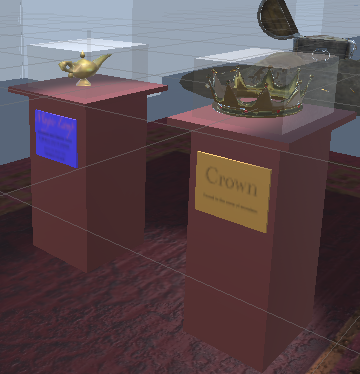
Showcase
- Sound: No sound
- Interactiveness: Not Interactive
- Animation: No animation
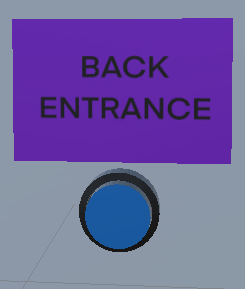
Teleporting Button
- Sound: No sound
- Interactiveness: When Touched Teleports you to another place in the atrium
- Animation: No animation

Lever
- Sound: No Sound
- Interactiveness: Can be grabbed, Moved To Make the Wall Disappear
- Animation: No sound
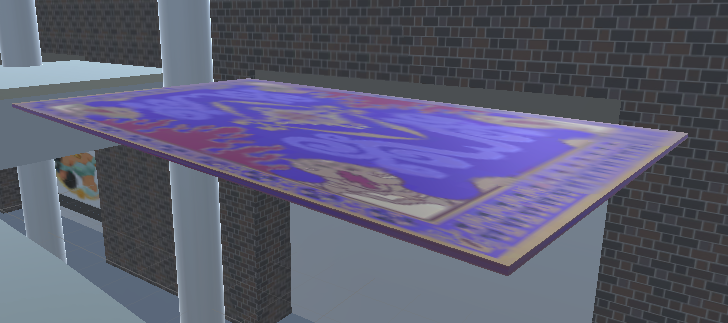
Magic Carpet
- Sound: No sound
- Interactiveness: Not Interactive
- Animation: Moves Back and Forth
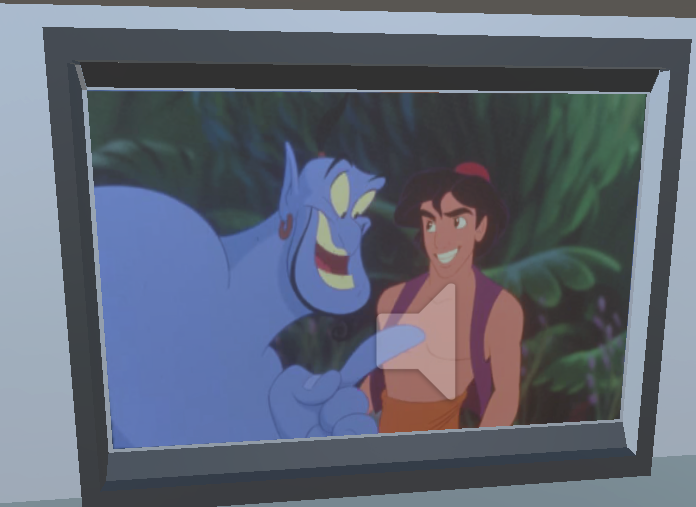
Television
- Sound: When you walk near plays "Friend Like Me" from Aladdin
- Interactiveness: Not Interactive
- Animation: No Animation
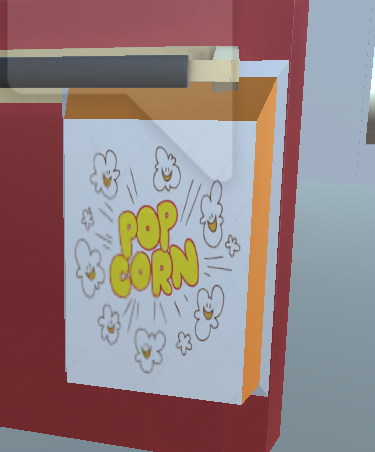
Pop Corn Machine Buttons
- Sound: When Touchedplays Ding Sound
- Interactiveness: Can be touched to spawn Popcorn Bucket in the Pop Corn Machine Button
- Animation: No Animation

Table
- Sound: No Sound
- Interactiveness: Cannot be Grabbed but able to keep things on
- Animation: No Sound
Model Citations
Flat Models
- Magic Carpet:
-
Maroon Carpet:
- "Alchemist carpet" (https://skfb.ly/orOoE) by Jopii is licensed under CC Attribution-NonCommercial-NoDerivs (http://creativecommons.org/licenses/by-nc-nd/4.0/)
- TV Screen:
- Princess Jasmine:
- Aladdin Movie Poster:
- Disappearing Wall Made using UNITY
-
Welcome Banner
- Custom Texture Using Procreate
-
Teleporting Instructions
- Custom Texture Using Procreate
-
Artifact Labels
- Custom Texture Using Procreate
Music and Sound Effects
- PopCorn Popping Sound Source
- Ding Sound Source
- Friend Link Me Performed by Michael KosarinWill Smith Written by Alan MenkenHoward Ashman Produced by Alan MenkenMatt SullivanMitchell LeibGuy RitchieMarc Platt Source: Walt Disney Records Source
- Arabian Nights Instrumental Arabian Nights (2019) - Instrumental Performed by Alan MenkenBenj PasekHoward Ashman Justin PaulMichael KosarinWritten byAlan MenkenBenj PasekHoward AshmanJustin Paul Produced by Alan MenkenMatt SullivanMitchell LeibGuy RitchieMarc Platt Source: Walt Disney Records Source